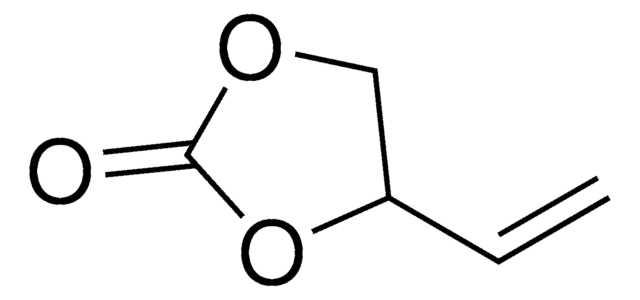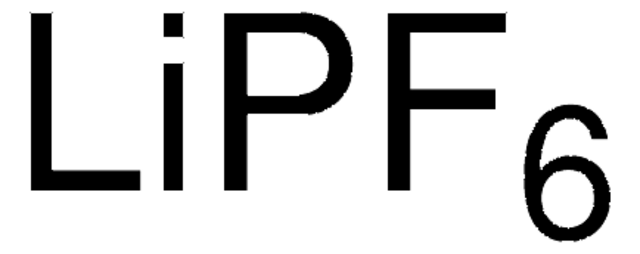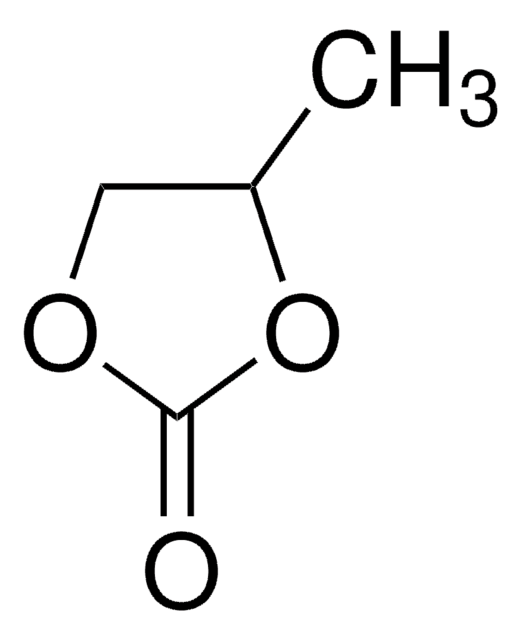935611
4-Vinyl-1,3-dioxolan-2-one
≥99.9%, anhydrous, battery grade
Synonym(s):
VEC, Vinyl ethylene carbonate
About This Item
Recommended Products
grade
battery grade
Quality Level
description
Application: Battery manufacturing
Assay
≥99.9%
form
liquid
greener alternative product characteristics
Design for Energy Efficiency
Learn more about the Principles of Green Chemistry.
sustainability
Greener Alternative Product
impurities
≤100 ppm H2O
refractive index
n20/D 1.45 (lit.)
bp
237 °C/733 mmHg (lit.)
density
1.188 g/mL at 25 °C (lit.)
application(s)
battery manufacturing
greener alternative category
storage temp.
2-8°C
SMILES string
C=CC1COC(=O)O1
InChI
1S/C5H6O3/c1-2-4-3-7-5(6)8-4/h2,4H,1,3H2
InChI key
BJWMSGRKJIOCNR-UHFFFAOYSA-N
Looking for similar products? Visit Product Comparison Guide
General description
Application
related product
Signal Word
Danger
Hazard Statements
Precautionary Statements
Hazard Classifications
Acute Tox. 3 Oral
Storage Class Code
6.1C - Combustible acute toxic Cat.3 / toxic compounds or compounds which causing chronic effects
WGK
WGK 1
Flash Point(F)
206.4 °F - closed cup
Flash Point(C)
96.9 °C - closed cup
Regulatory Listings
Regulatory Listings are mainly provided for chemical products. Only limited information can be provided here for non-chemical products. No entry means none of the components are listed. It is the user’s obligation to ensure the safe and legal use of the product.
FSL
Group 4: Flammable liquids
Type 3 petroleums
Hazardous rank III
Water insoluble liquid
JAN Code
935611-50G:
935611-VAR:
935611-BULK:
Choose from one of the most recent versions:
Certificates of Analysis (COA)
Sorry, we don't have COAs for this product available online at this time.
If you need assistance, please contact Customer Support.
Already Own This Product?
Find documentation for the products that you have recently purchased in the Document Library.
Our team of scientists has experience in all areas of research including Life Science, Material Science, Chemical Synthesis, Chromatography, Analytical and many others.
Contact Technical Service








